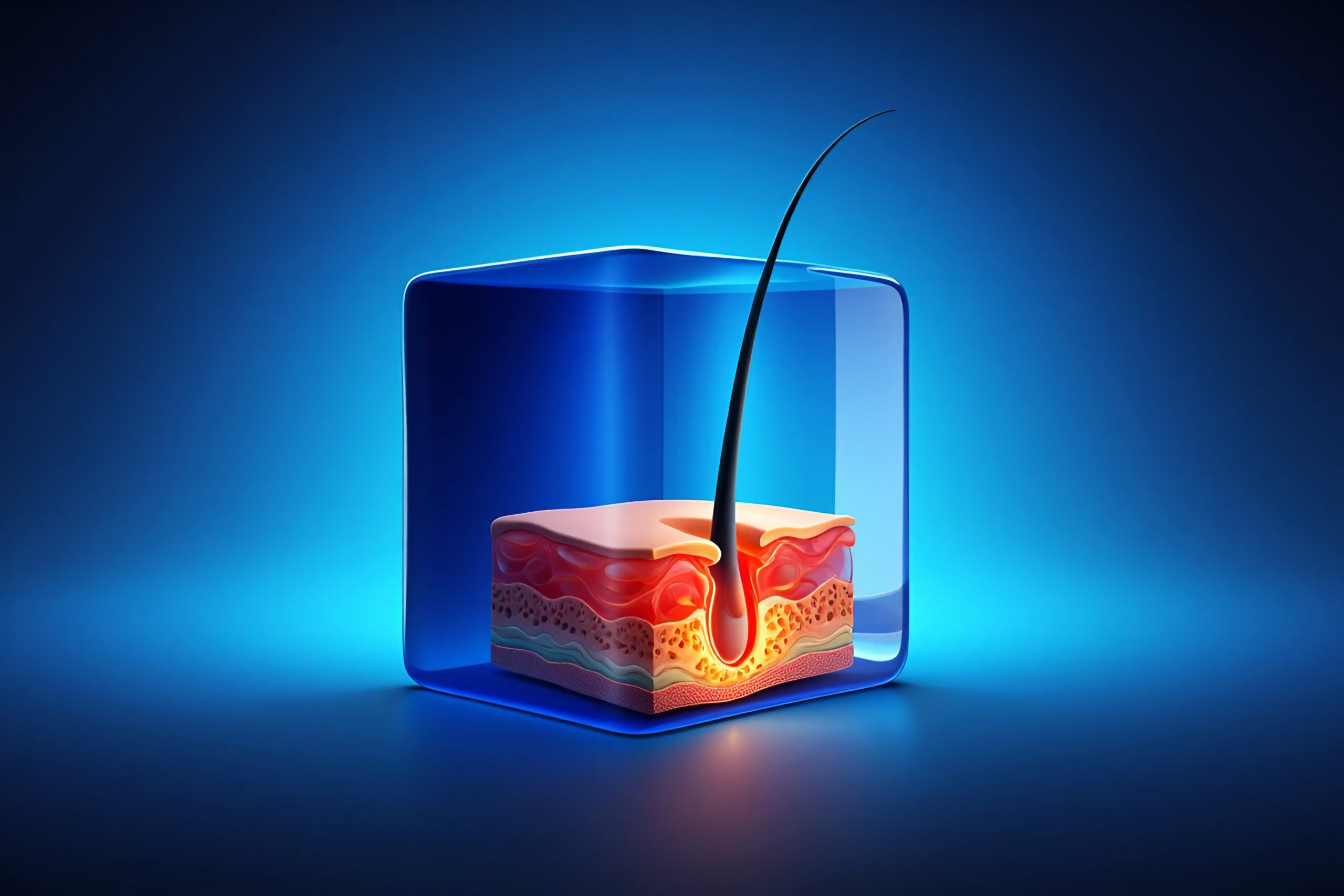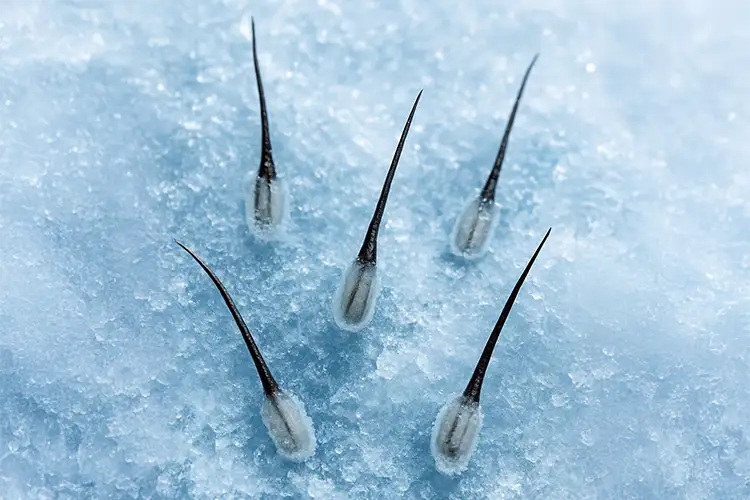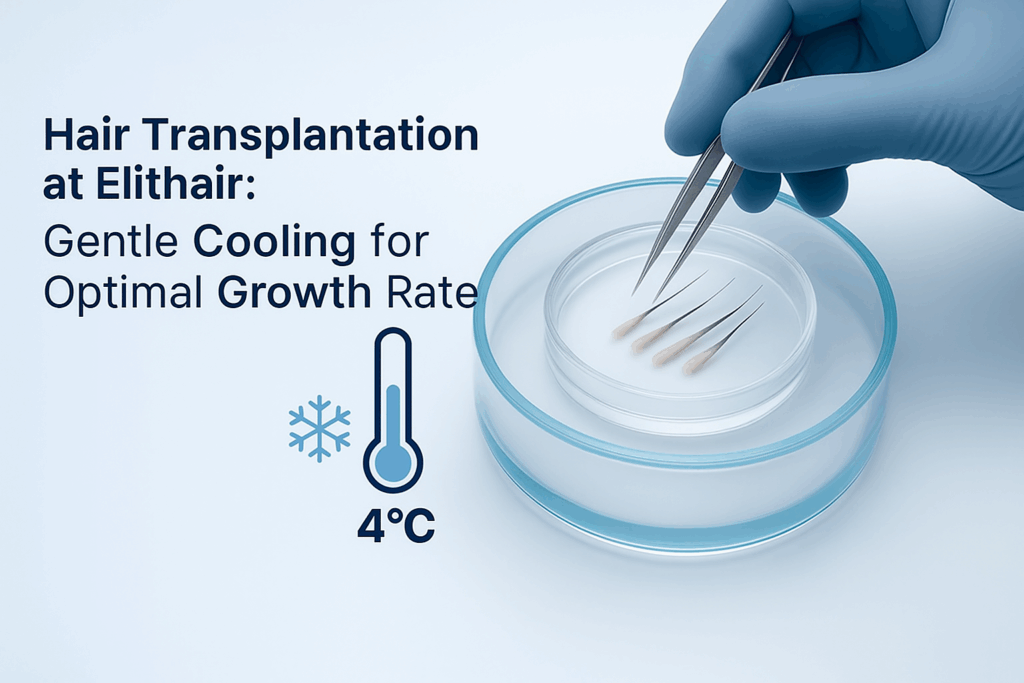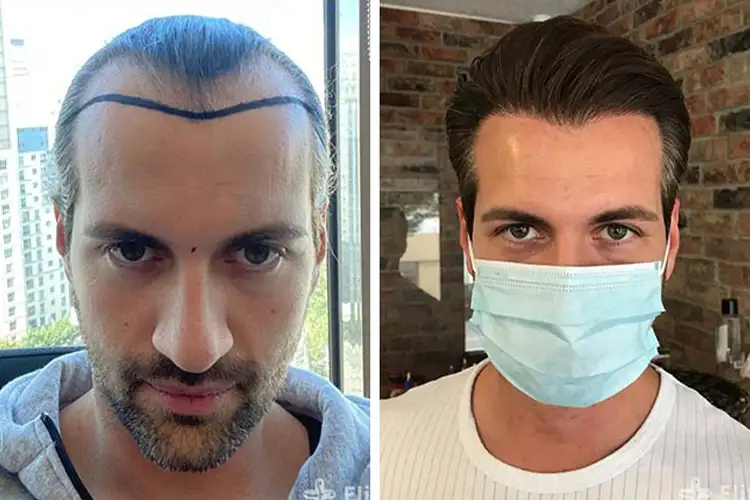
Ice Hair Transplant: What it Really Means
Hair loss affects many people – often accompanied by insecurity, frustration, and a desire for change. In their search for solutions, those affected are increasingly encountering terms like “ice hair transplant” or “ice graft method.” But although the terms sound similar, they are significantly different – both medically and in their practical relevance.
Anyone planning a transplant should know exactly what these terms mean – because not every “cooling method” actually brings benefits for hair growth and the healing process. In this article, we’ll be breaking down the differences and everything you need to know.
Ice Graft Method – A Theoretical Approach With Practical Limitations

In the so-called ice graft technique, the hair follicles are cooled to extreme temperatures of up to -196 °C after removal – usually by storing them in liquid nitrogen. The goal of this method is to preserve the grafts for longer periods.
But this approach has significant disadvantages:
- The frozen grafts must be slowly brought to body temperature before implantation, which delays the procedure.
- The delicate cell structure can be damaged by freezing and thawing.
- The growth rate suffers under these stresses – and thus the overall result of the transplant.
This method is therefore not used in modern hair transplant clinics – especially not for procedures that are performed in one session.
In contrast, the term ice hair transplant usually describes a controlled cooling of the grafts to about 4 °C – without freezing.
How Hair Transplantation Works at Elithair

While some clinics advertise with terms like Ice Hair Transplantation, the controlled cooling of the grafts at Elithair is not a marketing tool – but an integral, medically sensible part of the treatment process.
At Elithair, the hair follicles are not frozen after removal using the proven FUE (Follicular Unit Extraction) method, but are specifically cooled to around 4 °C.
They are stored in a specially-developed nutrient solution containing biotin and other micronutrients. This keeps the grafts vital, hydrated, and optimally protected until their reimplantation.
This form of controlled cooling is now standard practice in every reputable hair transplant clinic—anything else would be medically unacceptable.
At Elithair, we rely on precisely this proven approach because it offers the greatest benefit for our patients—without taking unnecessary risks.
Your Advantages with Elithair at a Glance:
- Vitality of the grafts is maintained
- Protection against tissue damage caused by cold or dehydration
- No delay due to thawing processes
- Safe, medically sound procedure without unnecessary risks
We deliberately avoid freezing the hair, as is the case with the so-called ice graft method. Our hair transplants are performed in a single session, without any loss of time or intermediate storage. We do this because the shorter the time between harvesting and replantation, the better the prognosis for hair regrowth.
In this way, we create the basis for a natural, dense, and lasting result – with medical care.
More Than Just Cooling: What Patients Can Really Expect

Controlled cooling of the grafts is firmly integrated into the Elithair treatment process.
It’s not a special feature, but rather part of a well-founded, professional approach that should be standard in any high-quality clinic. The decisive factor, however, remains the result: naturally growing, permanent hair that blends aesthetically into the overall look – without any artificial promises or misleading terms.
At Elithair you also benefit from:
- High number of grafts per session – even with severe hair loss, we achieve visible thickening.
- Faster healing phase – through precise work, minimal stress on the tissue and optimally prepared follicles.
- Individually tailored techniques based on hair structure, scalp condition and desired results.
Whether using the DHI technique or the FUE method, every treatment at Elithair is designed to be medically sound, aesthetically pleasing, and long-lastingly effective.
Conclusion: Doing What’s Best For You and Your Hair
The terms ice graft and ice hair transplant sound similar—but they represent two completely different approaches. While freezing grafts to extreme subzero temperatures with the ice graft method is hardly practical in practice, the controlled cooling of ice hair transplants to approximately 4°C has long been considered a proven medical standard.
At Elithair, controlled cooling isn’t a trend, but rather an integral part of a well-founded and well-thought-out treatment concept. It is performed routinely, precisely, and solely with the goal of optimising the graft growth rate—not for advertising purposes.
For us, it is not the name of a method that counts, but its benefits: a natural, lasting hair look – safer, faster, and more impressive.
FAQs
Is the cooling method used at Elithair painful for the patient?
No, the controlled cooling of grafts is applied outside the body and has no impact on the patient’s comfort. The transplant itself is carried out under local anaesthesia, so the procedure is generally painless.
How long does it take to see full results after an ice hair transplant?
Full results are usually achieved within 12 to 18 months, as the transplanted follicles need time to adapt, shed, and then regrow naturally.
Are there any risks associated with controlled cooling of grafts?
Controlled cooling to around 4 °C carries no medical risks when performed correctly. It is considered standard practice to preserve follicle vitality and is far safer than the outdated freezing approach.
Can both men and women benefit from ice hair transplants?
Yes, hair transplants are suitable for both men and women experiencing thinning or hair loss, provided they have sufficient donor hair available for extraction.


